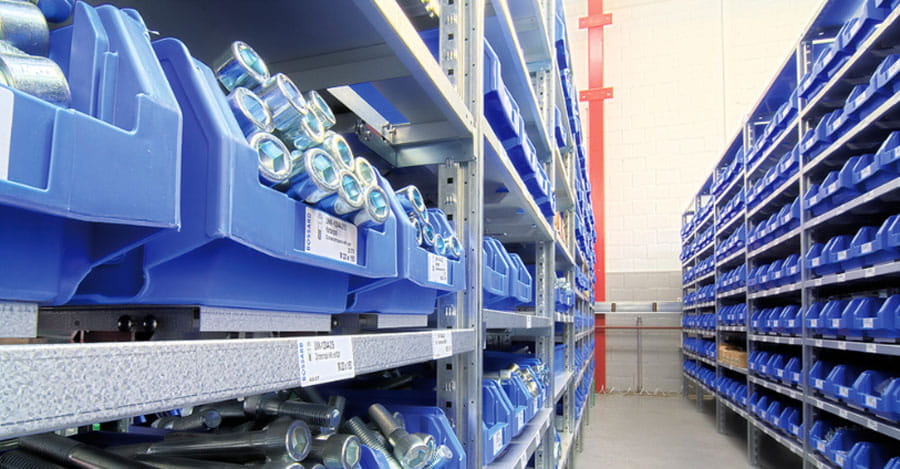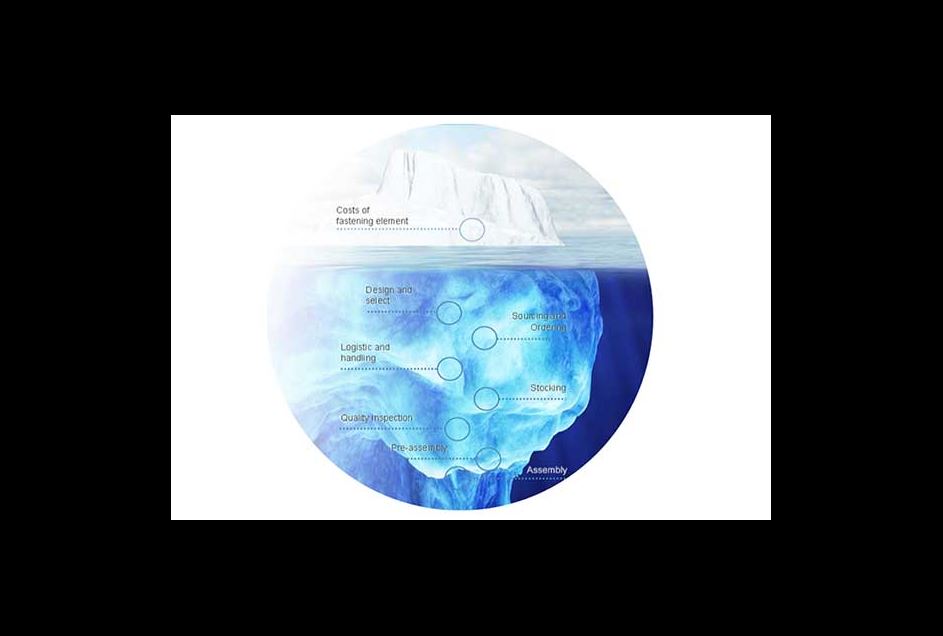What Is C-Parts Management, and how is it linked to TCO?

What does C-parts management mean? How does it relate to total cost of ownership (TCO)? And, more importantly, how do these concepts affect your business?
What Are C-Parts?
C-parts are the fasteners and connecting components that are essential to nearly every kind of manufacturing, from children’s toys to computers to automobiles and everything in between. Billions of fasteners and fastening elements are used around the globe each year.
In the ABC Analysis, a common categorization technique used in materials management, A-parts are the highest-value parts, B-parts are intermediate in value, and C-parts are the least valuable.
Even though C-parts are low in value, they are ultimately high in importance to the end product. Screws, nuts, bolts, and washers are all C-parts. Though these fasteners are small, low-cost and often overlooked, they make up a substantial amount of most companies’ inventories. On average, 65-75% of all parts are C-parts.
What Is C-Parts Management?
The goal of C-parts management is to cost-effectively organize procurement and management of C-parts. With poor C-parts management, companies end up spending a disproportionate amount of effort and expenses dealing with C-parts. When you have a good strategy for managing your C-parts, your fastening elements can do exactly what they were meant to do: hold things together without causing hassle and expense.
Companies that have mastered C-parts management flow smoother throughout their many departments than those that have not. They have streamlined the replenishment process; they don’t experience delivery bottlenecks due to running out of C-parts, and they don’t experience the wasted cost that comes with ordering too many parts.
To reduce risk in C-parts management, a company must ensure constant supply of the correct parts, and it must process parts efficiently. That means ordering the correct amount and storing the appropriate C-parts, having a well-thought-out ordering process, adopting a supply strategy that optimizes costs for all procurement processes, and more.
One effective way to manage your C-parts is to automate your ordering systems through Bossard Smart Factory Logistics. Read on to learn more about the specific ways that a TCO calculation can help you so you can make informed decisions when choosing which processes and areas to improve.
How C-Parts Relates to TCO
When it comes to C-parts, most of the costs (aside from the purchase price) are hidden costs. If you don’t go searching for them, they remain invisible. These hidden costs can include the following:
- The time it takes to order the products
- Delivery
- Unpacking
- Storage
- Moving them from place to place
- Assembly
You can gain moderate to significant cost savings when you analyze and reduce these invisible costs.
TCO, or total cost of ownership, is a great way to identify cost structure and reduce process costs with suitable solutions. When you run a TCO evaluation, you’ll have the necessary information to determine whether the following areas need to be optimized:
- Suppliers
- Order frequency
- Order value
- Method of ordering
- Research and development processes
- Production
- Assembly
- Quality management
- Service
- Admin
- IT
There are obvious costs in each category, but as mentioned above, there are also costs that are harder to see. Within each of these categories, there are many details that may be able to be optimized. You can get as detailed as you want when breaking down the different process steps. Cost-saving opportunities can be found in surprising places, and every detail has a potential to impact the total cost of ownership of your C-parts.
For example, if ordering is where you’re running into issues, then automating your order process with a product like Bossard SmartBin may be your solution. SmartBin is excellent for the management of C-parts. It orders a predefined quantity of new parts as soon as the order point is reached based on current stock levels, and it can be installed on a work cell or at the assembly line. It can totally eliminate waiting time and goods movement by ordering replacements at the right time and sending them directly to the point of use.
If your TCO shows that assembly is where your company faces issues, a decision as small as switching from a regular screw to a pre-coated screw can make a big impact. A pre-coated screw cuts costs by eliminating the need to lubricate during assembly, which saves time and reduces the need to purchase lubricant and brushes. These are just a few examples of how an in-depth look at total cost of ownership can help your company become more efficient.
The above list isn’t a complete rundown of the areas where your company may have potential to improve. It’s important to look beyond the obvious costs and dig deep to find every opportunity. There are many additional company-specific opportunities, which is why a TCO calculation should be tailored specifically to your business. Our experience has shown that unique cost savings can be found in every organization, no matter the size, especially in the area of C-parts management.
Using a TCO tool like the one developed by the Institute of Technology Management at the University of St. Gallen, you can make TCO calculations that are specific to your company so you can discover hidden costs and make smart, informed decisions on where to improve your C-parts management process.


